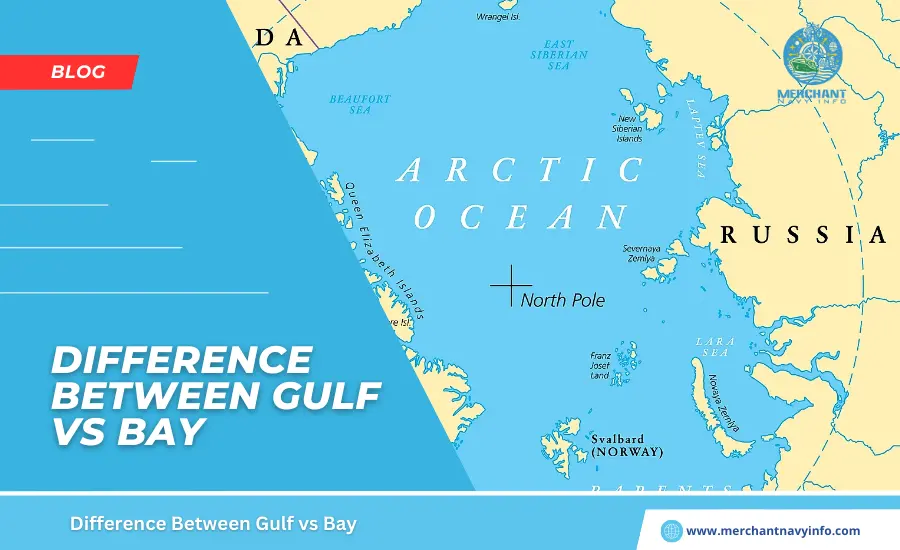
When studying various geographical features and formations. We often come across terms that are sometimes used interchangeably but are distinct from each other. Two such terms are gulf vs bay, both of which are connected to a larger body of water. And are partially surrounded or surrounded by land. Knowing the difference between the two is crucial to understanding the geography. Maritime history, culture, trade practices, and the local communities that depend on that particular geographical resource for their livelihood. It also helps create environmental awareness. And distinguish between the ecosystems, marine flora, and fauna that a gulf vs bay can support. The distinction between a gulf vs bay can be made based on its formation. Size, shape, depth, location, etc., which are discussed in this article.
Bays and Gulf Coasts – Key Differentiators
A bay is a partially enclosed body of water that is directly connected to a larger body of water, such as a sea or ocean. Bays are also found in lakes and rivers. They are relatively newer than bays and are formed primarily by erosion by waves and currents over many years. Bays have a wide opening and are circular or U-shaped, allowing easy access and exchange of water with the larger body of water to which they are connected. Bays are usually smaller than bays and are located along coasts, in bays or coves. However, some bays can be larger than this. Bays are small and are ideal for swimming, fishing, and boating.
Different Shapes
Bays are concave in shape, curving inwards towards the land. They are formed by erosion of soft rocks and sediments carried by ocean currents and waves over eons. Bays vary in shape and size from small, sheltered bays to vast gulfs. Bays are larger, deeper, and have a more complex shape than bays, while bays are simpler in shape and shallower than gulfs. They extend over large areas, contain large amounts of water, and have a significant effect on the climate of their respective regions or areas.
Differences in Depth
In terms of bedrock, bays are usually deeper than gulfs because they form in areas where the crust is thinner, allowing for deeper waters. Bays form in areas where the crust is thicker, so they have shallow waters near the shore and deep waters in deeper areas away from the shore. Bays have a longer coastline compared to bays, making navigation more difficult. Many bays have large ports and are important trading centers.
Geological Formation
Bays are formed primarily by plate tectonics, which causes the shifting and movement of the Earth’s crust, forming deep undersea basins that then gradually fill with water to form bays. The Gulf of Mexico formed when North and South America separated, forming a deep basin that eventually filled with water. The movement of the Pacific and North American plates caused nearby land to sink, forming the long, narrow Gulf of California. Meanwhile, the main factors behind the formation of Bays are erosion and, most commonly, tidal erosion.
It occurs when a tide comes in and out, slowly eroding or washing away the shoreline, creating an indentation. Bays are also formed by different erosion processes when different types of rocks erode at different rates over a period of time. This process forms bays with steep cliffs and deep water, such as the fjords in Norway. Bays are also formed by glacial activity. During the last ice age, glaciers covered most of the Earth’s surface. When they started to melt, valleys and bays were formed, such as the Chesapeake Bay in the United States.
Some Important Gulfs and Bays of the World

The most famous gulfs in the world include the Gulf of Mexico, the Persian Gulf, the Gulf of Oman, the Gulf of Aqaba, the Gulf of Aden, and the Gulf of Panama, which have vast oil and gas reserves. Some of the famous bays include Hudson Bay, San Francisco Bay, Bay of Biscay, Bay of Bengal, etc. The Gulf of Mexico is surrounded by the southern United States and Mexico. It is connected to the Atlantic Ocean and has warm waters and a diverse range of marine life. Chesapeake Bay is located on the east coast of the United States and is the largest estuary in the country. It is home to several species of fish and is rich in shellfish.
Environmental Impact Of Bays And Gulfs
Bays and Gulfs are different geological formations and have different impacts on the surrounding environment and ecosystems. In terms of ecosystem diversity, bays can be said to have less ecosystem diversity than gulfs because of their smaller size, but bays have more diverse marine ecosystems because they tend to be larger and deeper. Bays have higher nutrient levels because they are exposed to ocean currents, which results in higher productivity and supports habitats such as estuaries and salt marshes. Gulf coasts are more closed and have limited exchange with the open sea, which results in lower nutrient levels.
However, due to upwelling, etc, they have very diverse and productive ecosystems. Several industrial and commercial centers are located in or near the bay, making it a densely populated and polluted area. The main polluting factors are runoff and pollution from coastal development, which can have serious effects on the water quality and ecosystem of the bay and the health of all the plants and animals it supports. The bay, on the other hand, is large and deep, providing some protection from localized pollution, but it still suffers from pollution from shipping, oil drilling, and other sources.
Role Of Bays And Gulfs In Trade Exploration And Maritime Defense
Since ancient times, bays and gulfs have formed human settlements and facilitated economic and socio-cultural exchanges between civilizations, especially maritime trade. Bays naturally form well-protected harbors with calm waters, serving as important sea routes and providing safe anchorage and unloading places for ships. Gulfs, especially those in the Middle East, allowed civilizations such as the Romans, Greeks, and Phoenicians to establish trade networks.
Gulfs have played an important role in naval warfare, as they provided strategic advantages for offensive and defensive operations. The enclosed nature of bays provides security for fleets, making them ideal locations for shipbuilding and use of naval bases. Bays with narrow entrances are important for maritime defense. They can be controlled and fortified and act as a natural barrier against invasion.
Conclusion
Finally, I would like to summarize the basic difference between a gulf vs bay. A bay has a wide mouth and can be circular or U-shaped, while a cove is narrow and long and may have a V-shaped opening. Bays are usually small and shallow compared to larger and deeper bays. Bays, due to their size and depth, are home to a greater variety of marine life than bays. Although bays are formed by plate tectonics, the primary driver of bay formation is erosion, most often tidal erosion.









